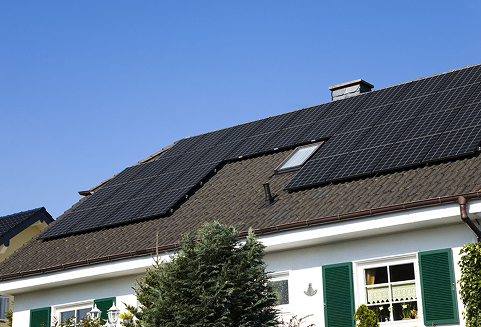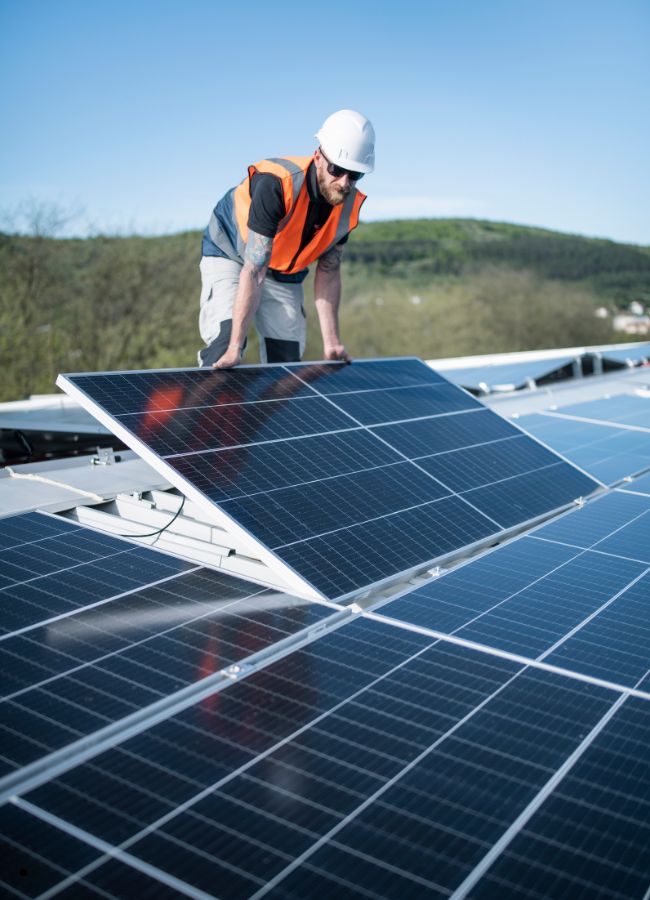The world is moving towards a cleaner, greener future, and solar power has taken the front seat in this transition. Among the different system sizes available, the 6.6 kW solar system has emerged as the most popular choice for homeowners and small businesses in Australia’s sunny states. But why is this size so well-loved, and what makes it such a smart investment?
In simple terms, a 6.6 kW solar system hits the “sweet spot”. It is large enough to cover the energy needs of a medium-sized household but not too big to break the bank. It’s affordable, efficient, and maximizes government rebates – making it a very attractive choice for both families and small businesses.
With energy prices rising year after year, more Australians are looking for long-term solutions to cut down their bills. That’s where solar comes in. Installing a 6.6 kW solar system means you’re not just reducing reliance on the grid – you’re actively protecting yourself against electricity price hikes. And in a state that enjoys abundant sunshine, the benefits only multiply.
In this article, we’ll break down everything you need to know about a 6.6 kW solar system: what it includes, how much power it generates, installation costs, financial returns, environmental impact, and whether it’s right for your home. We’ll also bust common myths, share real-life case studies, and answer the most asked questions. By the end, you’ll see why so many households have already switched to this system size and why it could be the best decision for your home too.
What Exactly is a 6.6 kW Solar System?
A 6.6 kW solar system refers to a setup where the total capacity of the solar panels adds up to 6.6 kilowatts. But what does that mean in practical terms? Let’s break it down.
System Components
A typical system includes:
-
Solar Panels – Usually 16–18 panels, depending on the wattage (e.g., 370W–415W each).
-
Inverter – The “brains” of the system, which converts DC power from the panels into usable AC power for your home.
-
Mounting System – Racking to securely attach panels to your roof.
-
Wiring & Switches – To connect and control the flow of electricity.
-
Optional Battery – Not included in the base system, but you can add one for storing excess energy.
How It Works
-
Sunlight hits the panels. The photovoltaic (PV) cells capture energy and generate DC electricity.
-
Inverter converts it. The inverter turns DC electricity into AC electricity that your home appliances can use.
-
Power is consumed or exported. Your home uses the solar power first. Any excess goes into the grid (earning you feed-in tariffs) or into a battery (if installed).
In short: the panels collect the sun’s energy, the inverter makes it usable, and you either use it immediately or export/store it. Simple yet powerful!
Why the 6.6 kW Solar System is the Sweet Spot
You might wonder: why not go for a smaller 5 kW system or a bigger 10 kW system? The answer lies in the balance between affordability, efficiency, and incentives.
Balancing Affordability and Efficiency
-
A 5 kW system is cheaper but may not fully cover a growing family’s electricity needs.
-
A 10 kW system offers more power but comes at a significantly higher upfront cost and may require a larger roof.
-
The 6.6 kW solar system is the middle ground – giving you enough output to slash bills while keeping costs manageable.
Meeting Household Energy Needs
For most households in sunny states, a 6.6 kW system produces 24–28 kWh of electricity per day. This is enough to cover:
-
Daily household appliances (fridge, lights, fans, TVs, etc.)
-
Heating and cooling systems
-
Washing machines and dishwashers
-
Electric hot water or cooking appliances
-
Even charging an electric vehicle, if usage is moderate
This production level aligns perfectly with the average energy consumption of a medium-sized Australian family.
Why is 6.6 kW Solar an Ideal Choice for the Sunny State?
Australia’s sunny states are blessed with one of the best climates for solar power generation in the world. This is the key reason why a 6.6 kW solar system performs exceptionally well and delivers maximum value.
Abundant Sunshine and Solar Potential
One of the most attractive benefits of living in the sunny state is the sheer number of sunlight hours received throughout the year. On average, most regions get 5–7 peak sun hours per day. For a 6.6 kW system, that means:
-
Daily output: 24–28 kWh of electricity
-
Annual output: Over 9,000–10,000 kWh of clean energy
That’s more than enough to cover the needs of an average household. Even on cloudy days, solar panels still generate a good amount of electricity, thanks to advanced technology in modern PV modules.
Solar Incentives and Rebates
Another reason why solar has become so popular is the range of government rebates and incentives available. The Federal Government offers Small-scale Technology Certificates (STCs), which reduce the upfront cost of installing solar. Depending on your location, this can save you thousands.
In addition, many state governments and energy retailers offer:
-
Feed-in tariffs (FiTs): You get paid for exporting unused energy back to the grid.
-
Low-interest loans: Some programs make solar systems more affordable.
-
Battery rebates: Incentives for households that add storage to their systems.
All of these benefits combine to make a 6.6 kW solar system one of the most cost-effective energy investments available today.
How Much Power Does a 6.6 kW Solar System Generate?
Understanding how much power you’ll get from your solar investment is crucial. A 6.6 kW system is known for its high efficiency and consistency.
Daily and Annual Output
On average:
-
Daily production: 24–28 kWh
-
Monthly production: 720–840 kWh
-
Annual production: 9,000–10,200 kWh
This output can cover between 80–100% of a household’s energy needs, depending on usage patterns.
Seasonal Variations
Solar output naturally varies with the seasons:
-
Summer: Highest output, long sunny days.
-
Winter: Lower output, shorter daylight hours.
-
Spring & Autumn: Balanced performance.
Even during winter, most households still generate enough to offset a large portion of their energy bills.
Cost of Installing a 6.6 kW Solar System
Now, let’s talk money. The cost of solar installation is one of the biggest questions homeowners have.
Upfront Investment
In Australia, a quality 6.6 kW system usually costs between:
-
$4,000 – $7,000 (after government rebates)
Prices vary depending on:
-
Brand of solar panels and inverter
-
Installer experience and warranty offers
-
Location and roof type
Payback Period
Most families see a payback period of just 3–5 years. This means the system pays for itself within a few years, and after that, the savings are pure profit. Over the system’s 20–25 year lifespan, you can save tens of thousands of dollars.
Financial Benefits of Going Solar
Switching to a 6.6 kW solar system isn’t just good for the planet, it’s also one of the smartest financial decisions you can make as a homeowner.
Savings on Electricity Bills
The biggest and most immediate benefit is the reduction in electricity bills. A well-installed 6.6 kW system can save households between $1,200 – $2,500 annually (depending on usage and energy rates). That’s thousands of dollars kept in your pocket every single year.
For families who use most of their electricity during the day, the savings are even greater since they consume solar power directly instead of paying grid prices.
Government Incentives
As mentioned earlier, rebates and Small-scale Technology Certificates (STCs) reduce installation costs by thousands. On top of that, feed-in tariffs (FiTs) ensure that any excess energy exported back to the grid still earns you money.
In some states, households even benefit from extra solar grants or loans, further reducing the upfront burden.
Return on Investment
When you combine upfront savings with ongoing bill reductions, the return on investment (ROI) is impressive:
-
Average ROI: 20–30% per year
-
Payback time: 3–5 years
-
Lifetime savings: $30,000 – $60,000
For most investments, achieving such a high ROI with so little risk is almost impossible. Solar, however, makes it achievable and practical.
Environmental Benefits of a 6.6 kW Solar System
While the financial gains are compelling, many households also install solar for its environmental benefits.
Cutting Carbon Emissions
A 6.6 kW solar system can offset around 8–10 tonnes of CO₂ emissions per year. That’s the equivalent of:
-
Planting more than 300 trees annually
-
Taking two cars off the road each year
-
Reducing reliance on coal and gas power stations
This is a direct and meaningful way for families to contribute to the fight against climate change.
Supporting Renewable Energy Growth
Every household that installs solar helps accelerate the growth of Australia’s renewable energy sector. This means:
-
More clean energy infrastructure
-
Less dependence on fossil fuels
-
A sustainable future for the next generation
By going solar, you’re not just cutting bills – you’re making a positive impact on the environment and community.
Is 6.6 kW Enough for Your Home?
One of the most common questions homeowners ask is whether a 6.6 kW system is enough for their energy needs.
Typical Household Usage
The average Australian home consumes 15–25 kWh per day. Since a 6.6 kW system generates around 24–28 kWh daily, it covers the energy requirements of most medium-sized households comfortably.
For homes with:
-
2–4 residents: More than enough to offset bills
-
5–6 residents: Covers most needs, may benefit from a battery
-
Electric vehicles: Still suitable but might need future upgrades
Future-Proofing with Batteries
Adding a solar battery can further maximize efficiency. While not essential, a battery allows you to:
-
Store excess daytime solar for night use
-
Reduce reliance on the grid
-
Protect against blackouts
-
Increase overall bill savings
For many families, starting with a 6.6 kW system and later adding a battery provides the perfect pathway to full energy independence.
Choosing the Right Inverter and Panels
Not all solar systems are created equal. To get the most out of your 6.6 kW solar installation, choosing quality panels and inverters is crucial.
Hybrid vs. String Inverters
-
String Inverters: Cost-effective, widely used, and reliable. Best suited for households with consistent roof orientation.
-
Hybrid Inverters: Allow easy integration of batteries. They cost more but future-proof your system.
Brands like Fronius, Sungrow, and GoodWe are highly recommended for their reliability and efficiency.
Panel Quality and Efficiency
When it comes to panels, efficiency and durability matter most. Look for:
-
Tier-1 panels (from trusted manufacturers)
-
25-year performance warranties
-
High efficiency ratings (20%+)
Some of the top panel brands include Jinko, Trina, and Canadian Solar. Investing in premium panels ensures long-term performance and better returns.
Installation Process Explained
Installing a solar system may sound complex, but with professional installers, it’s smooth and straightforward.
Site Assessment
The installer will first assess:
-
Roof space and angle
-
Shading issues (trees, nearby buildings)
-
Energy usage patterns
Installation Timeline
A typical 6.6 kW solar installation takes just 1–2 days, depending on roof type and system complexity.
Maintenance Requirements
Solar systems require minimal maintenance. A simple panel clean every 6–12 months keeps efficiency high. Most systems also come with smart monitoring apps, allowing you to track performance in real-time.



